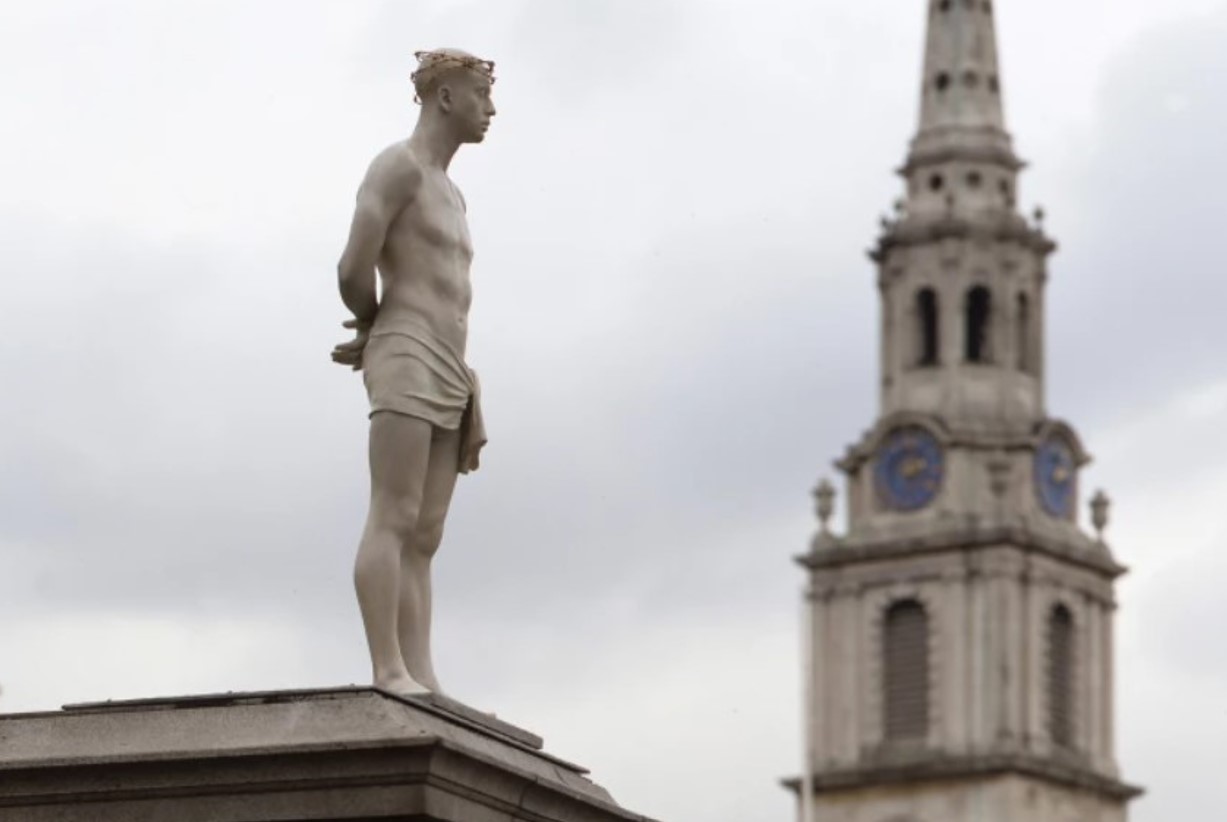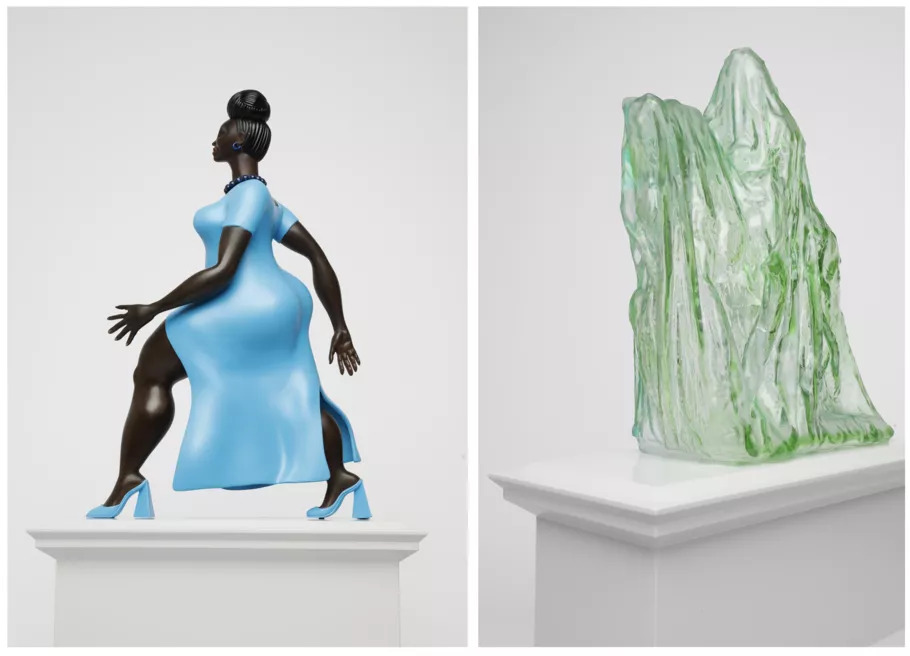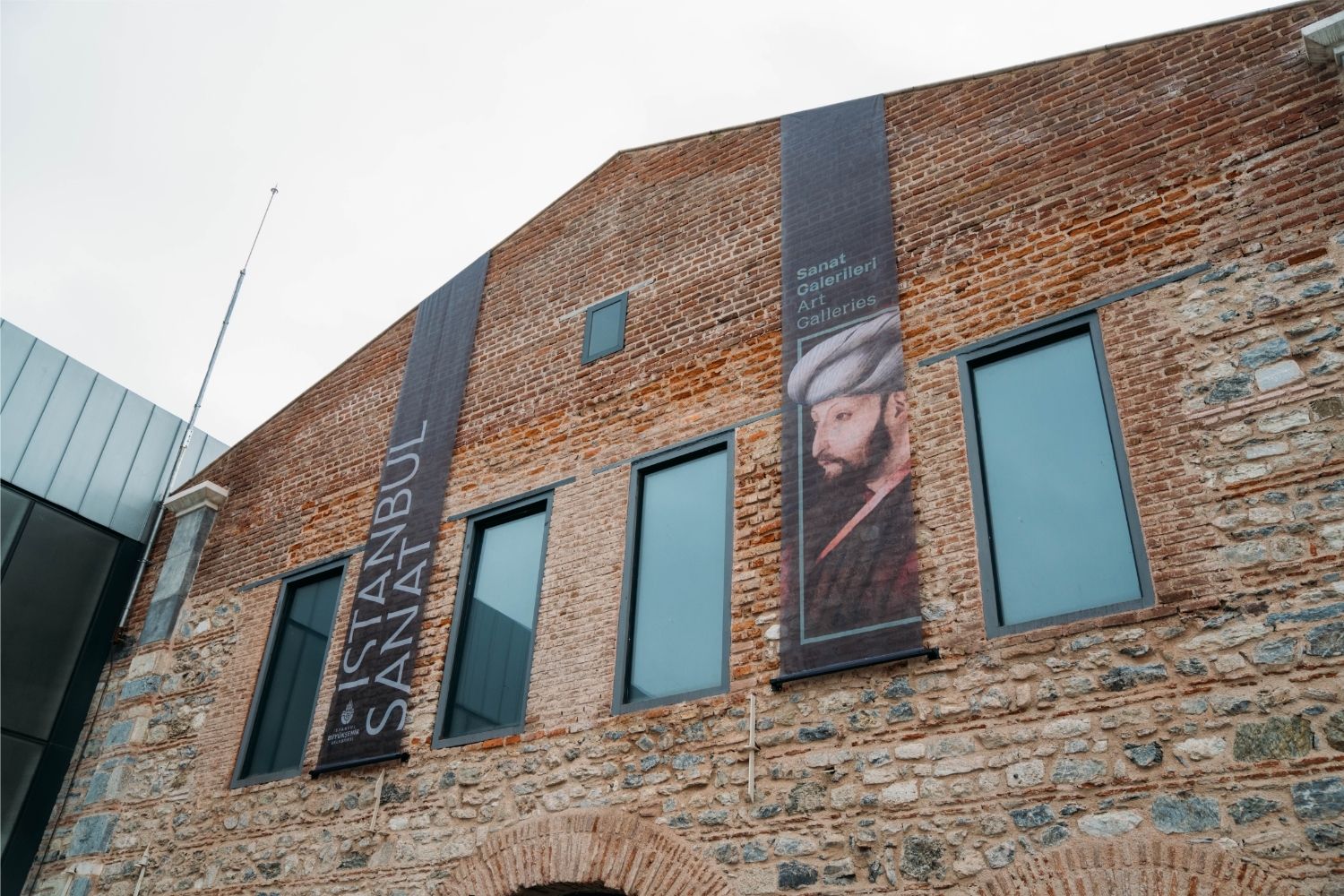New York–based artist Tschabalala Self and Romanian-American sculptor Andra Ursuţa have won the Fourth Plinth Prize. They were selected by the Fourth Plinth Commissioning Group, chaired by Ekow Eshun, from a shortlist of seven artists. The sculptures will be exhibited on London’s Fourth Plinth at famous Trafalgar Square in 2026 and 2028, respectively.

New York-based Self is known for her work in portraying women using fabric and paint on canvas. The selected work, Lady in Blue, pays homage to the metropolitan woman of color. She aims to save a seat for this contemporary woman at London’s bustling and touristy Trafalgar spot. Crafted in bronze, the sculpture will be patinated with Lapis Lazuli Blue, a special pigment with historical importance used by artists such as Titian and Vermeer.
“My work Lady in Blue will bring to Trafalgar Square a woman many can relate to. She is not an idol to venerate or a historic figurehead to commemorate. She is a woman striding forward into our collective future with ambition and purpose. She is a Londoner who represents the city’s spirit.” Self said in a statement regarding the sculpture.

Ursuţa works on themes such as patriotism, violence against women and discrimination against ethnic groups, and among the wide variety of materials she uses, she is best known for her use of epoxy. Her work selected for Fourth Pillar, Untitled, features a life-size, ghost-like figure riding a horse and is cast in light green resin. The figure questions the existence of contemporary public sculpture by symbolizing what was long forgotten deep in history.
“My work deals with history; history makes sense to us as we try to make sense of it. Trafalgar Square is where multiple histories face one another in an open-ended standoff.” Ursuţa said for the work Untitled.

The Fourth Plinth has become globally renowned as a stage for pioneering contemporary art since its establishment 25 years ago. Mark Wallinger’s Ecce Homo (1999), and Samson Kambalu’s Antelope, which is currently being displayed, are a few of the works that have been selected and exhibited before.
Following Queen Elizabeth II’s death in 2022, discussions arose regarding the installation of a permanent memorial sculpture on the plinth, prompting concerns within the city’s arts and cultural community.
The National Gallery is currently showcasing maquettes of the selected artworks until March 17. Virtual exhibitions are also available online and through Bloomberg Connects. The Mayor of London funds the program with support from Arts Council England and Bloomberg Philanthropies.







